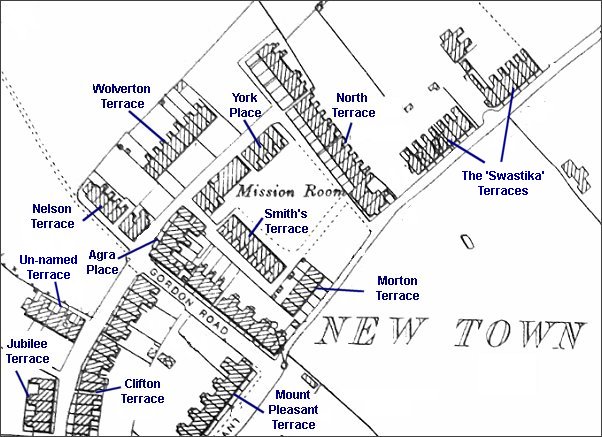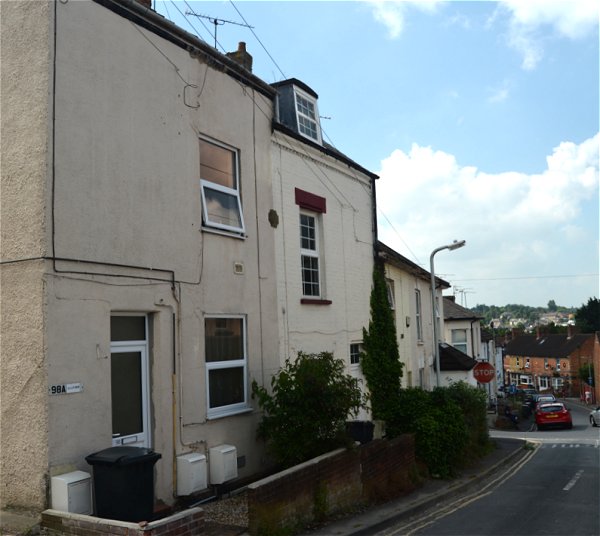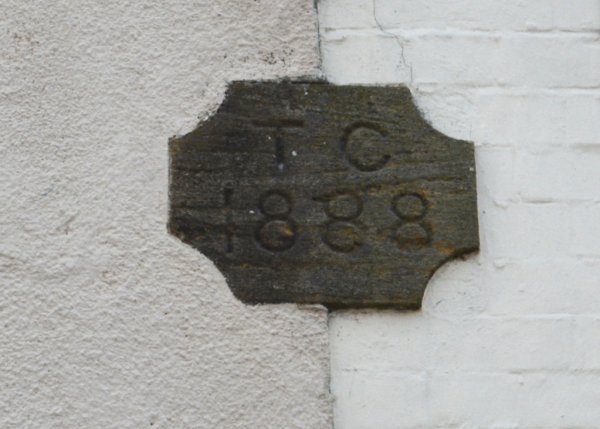agra place
agra place
An early part of New Town
Agra Place still survives and was built as speculative housing on a field known as Lower Ryalls. A short terrace, it was built by local builder and grocer Thomas Chant in 1888. Chant lived immediately next door to Agra Place in his shop on the corner of Eastland Road and Gordon Road, now a private house.
Agra Place was named to commemorate the Indian Mutiny siege of Agra Fort in 1857 when British rule across India was threatened. News of the rebellion had reached Agra on 11 May and on 30 May two companies of native infantry, the 44th and 67th regiments, rebelled and marched to Delhi. The next morning native Indian troops in Agra were forced to disarm, on 15 June Gwalior (which lies south of Agra) rebelled. By 3 July the British were forced to withdraw into the fort. Two days later a small British force at Sucheta were defeated and forced to withdraw, this led to a mob sacking the city. However, the rebels moved on to Delhi which allowed the British to restore order by 8 July. Delhi fell to the British in September, the following month rebels who had fled Delhi, along with rebels from Central India, marched on Agra but were defeated. After this British rule was again secured over the city until the independence of India in 1947.
Agra Place was referred to in a list of recipients of Andrew Ziles' charity distributions in 1896.
Map

The 1886 Ordnance Survey, showing Agra Place by the 'w' in New.

Map based on the 1901 Ordnance Survey showing the different speculative housing projects built in the early days of New Town.
Most of these
developments
have their own
page -
Agra Place,
Clifton Terrace,
Jubilee Terrace,
Mount Pleasant
Terrace,
North Terrace,
Smith's Terrace,
Swastika
Terraces,
Wolverton
Terrace,
York Place,
gallery

Agra Place, Eastland Road. The datestone referred to above and illustrated below is seen between the two first floor windows of the closest two properties. Photographed in 2014.

Thomas Chant's 1888 datestone referred to above. Photographed in 2014.